


Wool is a delicate and expensive material that requires special care to keep it in good condition. Many people wonder if it is safe to wash wool with regular detergent, or if they should use a specific wool detergent. We reached out to experts in the field to get their advice on this matter.
The general consensus among experts is that it is best to avoid using regular detergent when washing wool. Regular detergent can be too harsh on the delicate fibers of wool and may cause them to shrink, lose their shape, or become damaged. Wool requires a gentler approach to cleaning to maintain its softness and longevity.
“Wool is a natural fiber that has a unique structure,” explains Dr. Sarah Thompson, a textile expert. “It is made up of protein molecules that can be easily damaged by chemicals in regular detergents. Using a specially formulated wool detergent can help preserve the integrity of the fibers and prevent damage.”
According to Tom Johnson, a laundry specialist, using a wool detergent is the safest option for washing wool. “Wool detergents are specifically designed to clean wool without stripping away its natural oils or damaging the fibers. They contain milder surfactants and enzymes that are gentle on wool while effectively removing dirt and stains.”
So, if you want to keep your wool garments looking and feeling their best, it is recommended to use a wool detergent specifically formulated for this delicate fabric. By doing so, you can ensure that your wool items stay soft, vibrant, and in good condition for years to come.
About Washing Wool
Wool is a delicate and natural fibre that requires special care when being washed. The natural properties of wool, such as its ability to retain heat and moisture, also make it more prone to shrinking, felting, and losing shape if not washed properly.
Choosing the right detergent
When washing wool, it is crucial to use a detergent specifically formulated for delicate fabrics. Regular detergents often contain enzymes and harsh chemicals that can damage the fibers of wool, causing them to lose their softness and strength.
Look for a detergent that is labelled as “Wool Wash” or “Delicate”. These detergents are designed to gently clean wool without stripping away its natural oils. They are also formulated to rinse out easily, leaving no residue behind.
Important note: Avoid using bleach or any other harsh cleaning agents on wool, as they can cause permanent damage to the fabric.
Hand washing vs. machine washing
When it comes to washing wool, the best method is often hand washing. This allows for better control over the washing process and helps prevent any damage.
If you choose to hand wash your wool, follow these steps:
- Fill a basin or sink with lukewarm water.
- Add a small amount of wool wash detergent and mix well.
- Immerse the wool item in the soapy water and gently agitate it for a few minutes. Avoid rubbing or wringing the fabric.
- Drain the soapy water and refill the basin with clean lukewarm water.
- Rinse the wool item in the clean water, gently squeezing out any excess water as you go.
- Repeat the rinsing process until the water runs clear and there are no more soap suds.
- Roll the wool item in a towel to remove excess water, then reshape and lay it flat to dry.
If you prefer machine washing, make sure to follow these guidelines:
- Use a gentle or wool cycle on your washing machine.
- Place the wool item in a mesh laundry bag to protect it from unnecessary agitation.
- Use a small amount of wool wash detergent, following the instructions on the packaging.
- Do not overload the machine with other heavy items.
- After the washing cycle is complete, remove the wool item promptly and reshape it if necessary.
Dealing with stains
If your wool garment has a stain, it’s important to treat it as soon as possible. Avoid rubbing the stain vigorously, as this can damage the fibers.
Instead, try the following steps:
- Gently blot the stain with a clean white cloth or paper towel to remove any excess liquid.
- Apply a small amount of mild wool detergent directly to the stain.
- Gently massage the detergent into the stain using your fingers or a soft brush.
- Rinse the area with clean water and blot dry.
- If the stain persists, consider taking the wool item to a professional cleaner.
Note: It is always a good idea to consult the care label on your wool item for specific washing instructions, as some wool blends may require different care methods.
In conclusion
Washing wool requires care and attention to maintain the integrity and longevity of the fabric. By choosing the right detergent, following the appropriate washing method, and treating stains gently, you can ensure that your wool items stay soft, comfortable, and in great condition for years to come.
The Importance of Washing Wool Properly
Wool is a delicate and high-quality material that requires special care when it comes to washing. Improperly washing wool can result in shrinkage, felting, and damage to the fabric.
When washing wool, it is essential to use a gentle detergent specifically designed for wool or other delicate fabrics. Regular detergents can be too harsh and strip the natural oils from the wool, leading to dryness and stiffness.
Here are a few reasons why it is crucial to wash wool properly:
- Preserves the integrity of the fabric: Wool is known for its softness, warmth, and durability. By washing it properly, you can help maintain these qualities and extend its lifespan.
- Avoids shrinkage: Wool has a natural tendency to shrink when exposed to heat and agitation. By using the correct washing techniques, you can prevent this shrinkage and ensure your wool garments continue to fit properly.
- Prevents felting: Felting is a process in which the wool fibers bind together, resulting in a dense and matted texture. Proper washing techniques can help prevent felting and keep your wool items fluffy and soft.
- Preserves natural oils: Wool contains natural oils that help keep it soft and resilient. Harsh detergents can strip these oils, leaving the wool dry and prone to damage. By using a gentle detergent, you can help preserve the natural oils and keep your wool items in good condition.
In conclusion, washing wool properly is essential to preserve its qualities and ensure its longevity. By using a gentle detergent and following the recommended washing instructions, you can keep your wool garments looking and feeling their best for years to come.
Common Mistakes to Avoid
- Using regular detergent: One of the most common mistakes when washing wool is using regular detergent. Regular detergents can be too harsh and abrasive for delicate wool fibers, causing them to become damaged or distorted. It is important to use a detergent specifically formulated for wool or a gentle, pH-neutral detergent.
- Agitating too much: Agitating wool too much can lead to shrinkage and felting. When washing wool, it is crucial to handle it with care and avoid excessive rubbing or wringing. Instead, gently squeeze out any excess water and lay the garment flat to dry.
- Not checking the care instructions: Every wool garment is unique, and care instructions may vary. It is essential to read and follow the care instructions provided by the manufacturer. These instructions will guide you on the appropriate water temperature, detergent type, and washing method for your specific wool garment.
- Skipping the pre-treatment: When dealing with stains on wool, it is important to pre-treat them before washing. Ignoring this step can lead to the stains setting in and becoming more difficult to remove. Use a stain remover specifically designed for wool or a mild detergent to gently pre-treat any stains.
- Not testing for colorfastness: Before washing a wool garment, it is advisable to test for colorfastness. This can be done by applying a small amount of water and detergent to an inconspicuous area of the garment and checking for any color bleeding or fading. If the colors run or fade, it is best to take the garment to a professional cleaner.
- Using high heat: Wool is sensitive to high temperatures, and excessive heat can cause it to shrink and lose its shape. Avoid using hot water or high heat settings when washing and drying wool. Opt for cool or lukewarm water and air drying or using a low-heat setting on your dryer.
- Skipping the blocking step: Blocking is an important step in maintaining the shape and structure of wool garments. After washing, gently reshape the garment to its original size and dimensions. Lay it flat on a clean towel or blocking mat and allow it to air dry completely in its desired shape.
- Not storing properly: Wool garments should be stored properly to prevent damage and maintain their quality. Avoid hanging wool garments as this can stretch them out. Instead, fold them and store them in a cool, dry place, preferably in a breathable garment bag or wrapped in acid-free tissue paper.
Using Regular Detergent on Wool
When it comes to washing wool, using a regular detergent can be risky. Wool is a delicate fabric that requires special care to maintain its quality and longevity. Regular detergents are often too harsh and can damage the fibers of wool, causing them to lose their softness and shape.
Wool has natural oils that help repel dirt and stains, but harsh detergents can strip away these natural oils, leaving the wool more susceptible to damage. Regular detergents may also contain enzymes and bleach, which can further harm the wool fibers.
To properly care for your wool items, it is recommended to use a gentle wool detergent specifically designed for this fabric. Wool detergents are formulated to clean wool effectively while still preserving its natural properties. They are typically pH neutral and free of enzymes and bleach.
When washing wool, it is important to follow the care instructions on the garment’s label. In general, you should:
- Gently hand wash or use the delicate cycle on your washing machine.
- Use cold water to avoid shrinkage.
- Turn the garment inside out to protect its outer surface.
- Use a small amount of wool detergent according to the instructions.
- Avoid scrubbing or wringing the wool, as this can cause stretching and damage.
- After washing, reshape the garment and lay it flat to dry, away from direct sunlight.
If you don’t have a wool detergent available, you can also use a mild baby shampoo or a gentle hair conditioner as an alternative. These products are often formulated to be gentle on delicate fabrics and can provide a temporary solution until you can purchase a proper wool detergent.
Remember, taking proper care of your wool items will help them maintain their softness, shape, and quality for years to come.
Understanding the Risks
When it comes to washing wool, using regular detergent can pose several risks. Wool is a delicate fabric that requires special care to maintain its appearance and structural integrity. Using the wrong detergent can lead to damage and even ruin the wool garments.
1. Shrinking
One of the main risks of washing wool with regular detergent is shrinking. Wool fibers have a natural crimp and elasticity that gives them their shape. Regular detergents can strip away the natural oils and moisture from the wool, causing the fibers to become dry and brittle. This can lead to shrinkage and a change in the garment’s size and fit.
2. Fading and Discoloration
Regular detergents often contain harsh chemicals and bleaching agents that can fade or discolor wool. These chemicals can strip away the natural pigments in the wool fibers, causing the garment to lose its original color and vibrancy. In some cases, using regular detergent can result in irreversible color changes and damage to the wool garment.
3. Damage to the Wool Fibers
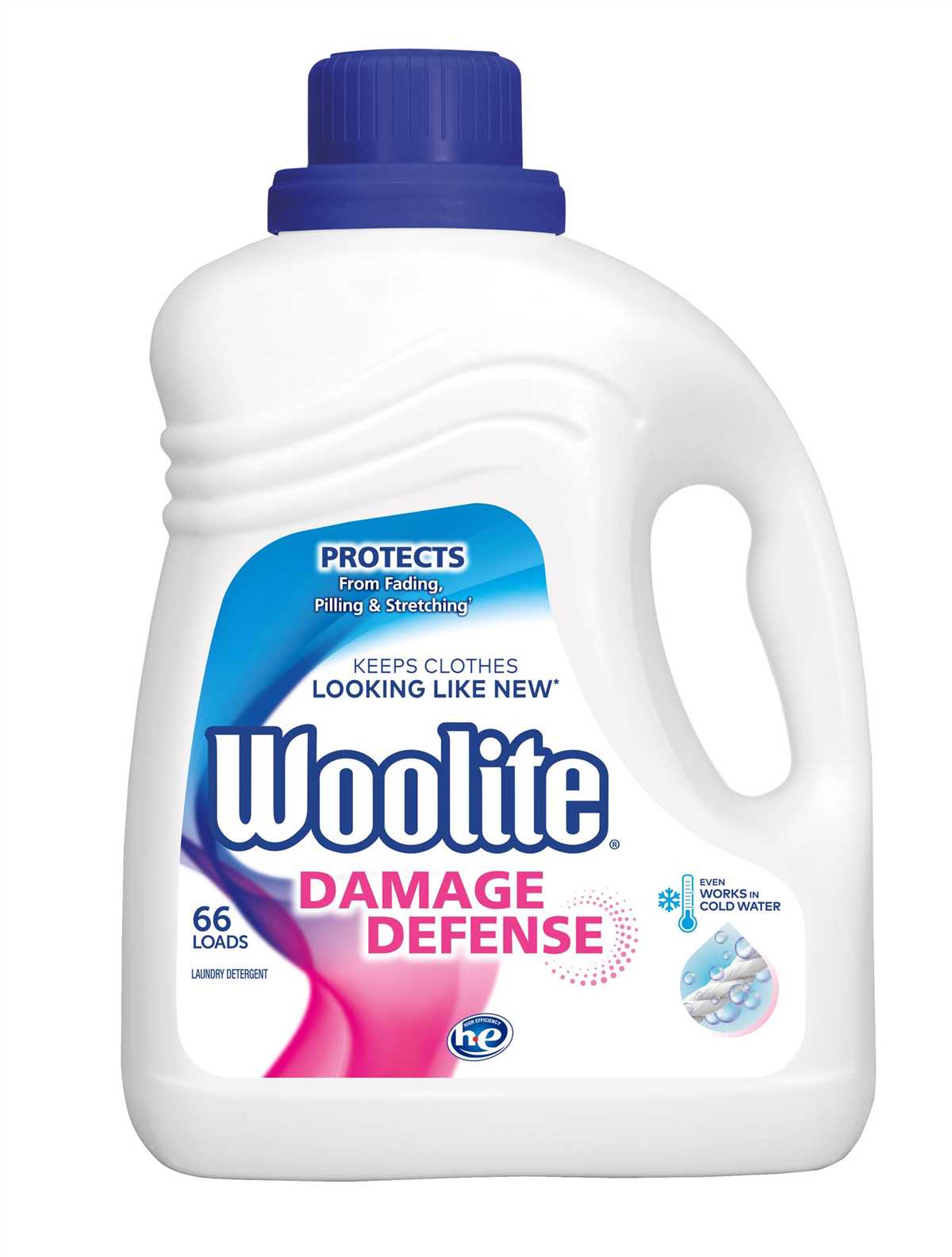
Wool fibers are delicate and can easily be damaged by the enzymes and chemicals found in regular detergents. These abrasive substances can weaken and break down the wool fibers, resulting in a loss of strength and integrity. Over time, this can lead to pilling, fuzziness, and a shorter lifespan for the wool garment.
4. Loss of Softness and Texture
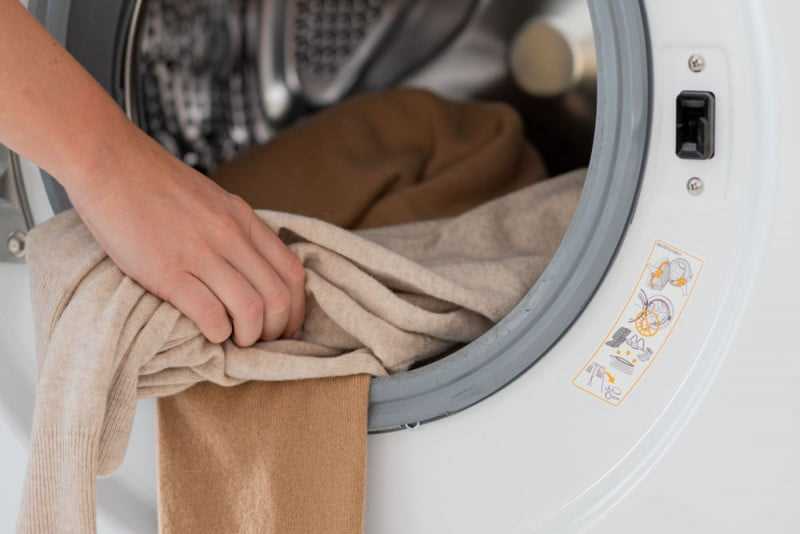
Regular detergents can strip away the natural oils and lanolin present in wool, causing the garment to lose its softness and texture. Wool is known for its luxurious feel and comfort, and using regular detergent can result in a rough and stiff fabric. This can make the garment less pleasant to wear and reduce its overall quality.
Overall, using regular detergent to wash wool garments can pose significant risks and potentially damage the fabric. To avoid these issues, it is important to use a gentle, wool-specific detergent that is specifically designed to care for wool fabrics.
Expert Advice on Washing Wool with Regular Detergent

Overview
Washing wool garments can be a delicate task, as wool is known to be a delicate and sensitive fabric that requires special care. However, in some cases, washing wool with regular detergent can be safe if done correctly. Here is some expert advice on washing wool with regular detergent.
1. Read the Care Label
Before attempting to wash your wool garment with regular detergent, it’s crucial to read the care label. The care label will provide specific instructions on how to handle and wash the garment, including whether regular detergent is acceptable or not. If the care label advises against using regular detergent, it’s best to follow the instructions and use a suitable wool detergent instead.
2. Test for Colorfastness
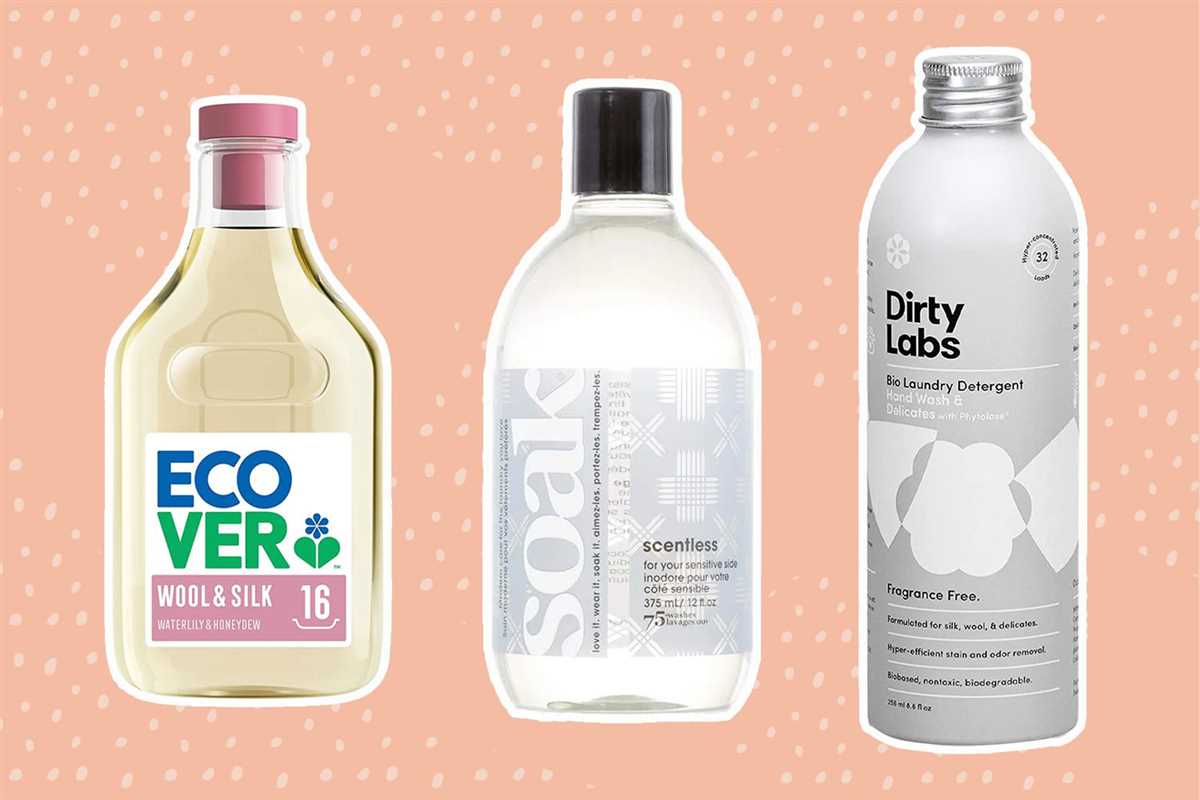
Another important step before washing wool with regular detergent is to test the garment for colorfastness. Moisten a small hidden area of the garment and apply a small amount of the regular detergent. Gently rub the detergent into the fabric and then rinse it thoroughly with water. If there is no color bleeding or fading, it should be safe to proceed with washing the entire garment with regular detergent.
3. Use the Right Amount of Detergent
When washing wool with regular detergent, it’s crucial to use the right amount of detergent. Too much detergent can lead to excessive sudsing and make it harder to rinse out completely. Follow the manufacturer’s instructions for the recommended amount of detergent to use based on the size of the load and level of soil on the garments.
4. Choose the Right Washing Machine Setting
Using the appropriate setting on your washing machine is vital when washing wool with regular detergent. Opt for a gentle or delicate cycle, which typically uses slower agitation speeds and shorter wash times. Avoid high-speed spin cycles, as they can cause unnecessary stress on the wool fibers. Additionally, wash the wool garments in cold water to prevent any shrinking or damage.
5. Dry Properly
After washing wool with regular detergent, it’s important to dry the garments properly. Avoid using high heat methods such as tumble drying or placing the garments directly under direct sunlight, as these can cause shrinkage and damage to the wool fibers. Instead, lay the wool garments flat on a clean towel and reshape them to their original form. Allow them to air dry in a well-ventilated area.
6. Check for Damage
Once the wool garments are dry, carefully inspect them for any signs of damage. Check for any shrinkage, stretching, or irregularities in the fabric. If you notice any damage or changes in the appearance of the garment, it’s best to consult a professional cleaner or follow the care label instructions for further maintenance.
Conclusion
While washing wool with regular detergent can be safe if done correctly, it’s always recommended to follow the care label instructions and use a suitable wool detergent whenever possible. By taking the necessary precautions and using the right techniques, you can maintain the quality and longevity of your wool garments.
Alternatives to Regular Detergent
If you’re concerned about washing wool with regular detergent, there are several alternatives you can consider:
1. Wool Wash
One of the best alternatives to regular detergent for washing wool is a wool wash product. Wool wash is specially formulated to clean and care for delicate fabrics like wool. It is gentle on the fibers and helps maintain the softness and shape of wool garments. Look for a wool wash that is specifically designed for washing wool and follow the instructions on the bottle for the best results.
2. Baby Shampoo
Another alternative to regular detergent for washing wool is baby shampoo. Baby shampoo is known for its mild and gentle formulation, making it a suitable option for cleaning delicate fabrics. It is important to choose a baby shampoo that is free from harsh chemicals and fragrances. Dilute the shampoo in water according to the instructions and soak the wool garment before gently rinsing it.
3. Vinegar
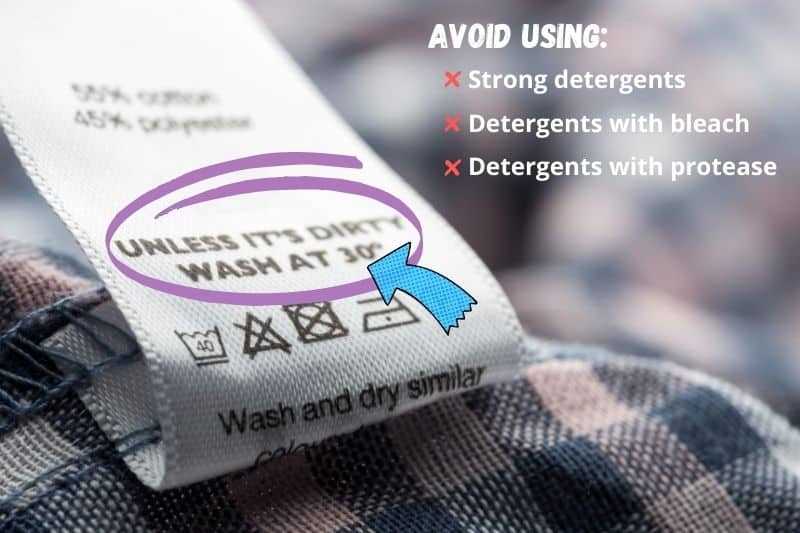
Vinegar can also be used as an alternative to regular detergent when washing wool. It helps remove odors and acts as a natural fabric softener. Mix one part vinegar with three parts water and soak the wool garment for about 30 minutes. Rinse thoroughly with cold water to remove any vinegar residue.
4. Liquid Castile Soap
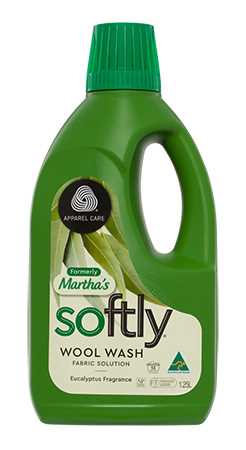
Liquid castile soap is a gentle and natural alternative to regular detergent for washing wool. It is made from vegetable oils and does not contain any harsh chemicals or synthetic fragrances. Dilute the liquid castile soap in water according to the instructions and gently wash the wool garment. Rinse thoroughly to remove any soap residue.
5. Handwashing

If you’re still unsure about using any detergent or alternative products, you can always opt for handwashing. Handwashing allows you to have more control over the washing process and minimize any potential damage to the wool fibers. Fill a basin or sink with cool water and add a mild detergent or alternative product. Gently agitate the garment in the water, then rinse thoroughly with cool water. Avoid wringing or twisting the wool garment and instead gently squeeze out any excess water before laying it flat to dry.
Remember to always read and follow the care instructions on the label of your wool garment, as specific recommendations may vary depending on the brand and type of wool.
FAQ
Is it safe to wash wool with regular detergent?
Washing wool with regular detergent is generally not recommended as it can damage the delicate fibres and cause shrinkage. It is best to use a mild detergent specifically formulated for wool or hand wash in cold water with a gentle soap.
Can I use regular laundry detergent on wool clothing?
No, using regular laundry detergent on wool clothing is not safe. Regular detergent can be too harsh for wool and may cause damage. It is recommended to use a mild detergent specifically designed for wool or hand wash with a gentle soap.
What happens if I wash wool with regular detergent?
If you wash wool with regular detergent, it can lead to several issues. The detergent’s harsh chemicals can damage the delicate fibres of the wool, causing it to lose its softness and shape. It can also cause shrinkage and make the wool feel rough. It is best to avoid using regular detergent on wool and opt for a gentle, wool-specific detergent instead.
Why should I avoid washing wool with regular detergent?
It is important to avoid washing wool with regular detergent because the harsh chemicals in the detergent can damage the delicate fibres of the wool. This can lead to shrinkage, loss of softness, and a rough texture. To properly care for wool, it is recommended to use a mild detergent specifically formulated for wool or hand wash with a gentle soap.












